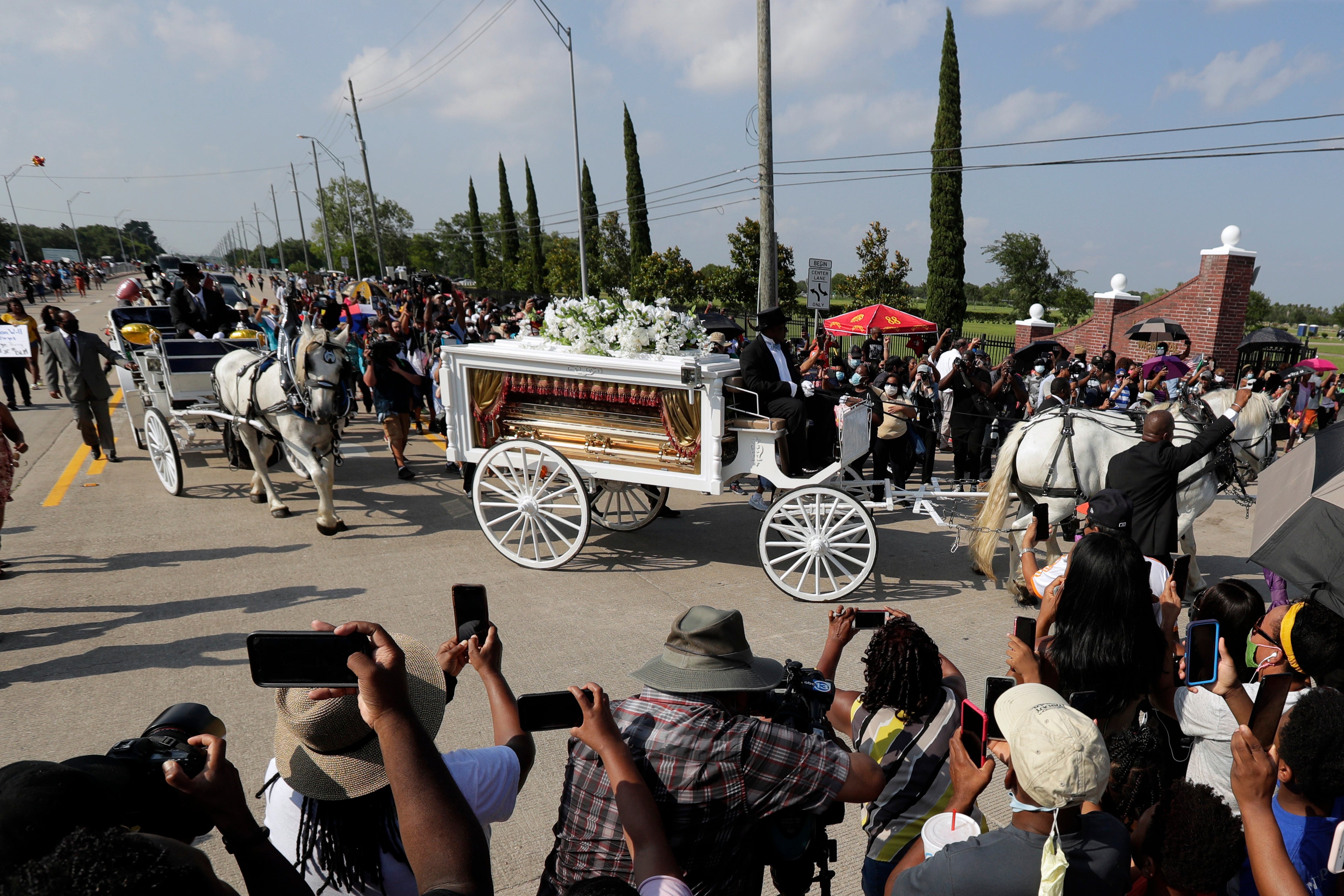Documents show large police presence at George Floyd burial
Documents obtained by the American Civil Liberties Union of Texas show authorities deployed hundreds of law enforcement personnel, including six sniper teams and Border Patrol agents, during George Floyd’s burial in June at a suburban Houston cemetery

Your support helps us to tell the story
From reproductive rights to climate change to Big Tech, The Independent is on the ground when the story is developing. Whether it's investigating the financials of Elon Musk's pro-Trump PAC or producing our latest documentary, 'The A Word', which shines a light on the American women fighting for reproductive rights, we know how important it is to parse out the facts from the messaging.
At such a critical moment in US history, we need reporters on the ground. Your donation allows us to keep sending journalists to speak to both sides of the story.
The Independent is trusted by Americans across the entire political spectrum. And unlike many other quality news outlets, we choose not to lock Americans out of our reporting and analysis with paywalls. We believe quality journalism should be available to everyone, paid for by those who can afford it.
Your support makes all the difference.Authorities deployed hundreds of law enforcement personnel, including six sniper teams and Border Patrol agents, during George Floyd’s June burial in suburban Houston due in part to online rumors of possible protests and riots, according to documents obtained by the American Civil Liberties Union of Texas.
Authorities prepared for the possibility of “violent protesting” and vandalism at the Pearland police department and municipal court building, which were near the cemetery, according to the documents first exposed by VICE News.
Floyd’s entombment in a mausoleum took place without any major incidents. Hundreds of mourners, including families with children, peacefully lined the street leading to the cemetery, setting up tents and chairs and waiting for hours in stifling 93-degree heat and humidity on June 9 for the arrival of his casket. The most dangerous thing during the burial ended up being the weather; eight people were hospitalized for heat-related illnesses.
Pearland Police Chief Johnny Spires defended the large law enforcement presence.
“Our job was to do all we could to ensure Mr. Floyd was entombed in peace and his family, the attendees, and our residents were safe. We had a responsibility to protect people and property that day,” Spires said in a letter posted Friday on Facebook.
The ACLU of Texas and a Houston-area activist were critical of how the burial was patrolled, calling it an unjustified and massive militarized police response.
“Just a comprehensive and deeply problematic example of a disproportionate policing response that deployed the potential for the violent use of force to an event where George Floyd’s family and the community were mourning the tragic loss of life at the hands of police officers,” said Shaw Drake, policy counsel of the ACLU of Texas Border Rights Center.
Ashton Woods, the lead organizer with Black Lives Matter Houston, said the police response could have put mourners in danger.
“No one was looking to take away attention from the funeral of George Floyd,” Woods said. “I feel like we never get room and space to breathe and grieve.”
Drake said the public's fear of looting “has been weaponized against brown and Black communities.”
Pearland police said they were aware their response could feed into the public perception of racial stereotypes, and that the agency had their officers wear normal uniforms. Additional personnel would not be visible unless the situation required a response.
Floyd, a Black man who grew up in Houston, died in May after a white Minneapolis police officer pressed his knee to Floyd’s neck, pinning him to the ground.
Before his burial in Pearland, area residents raised concerns with police about possible protests and violence due to posts they had seen on social media, according to a report prepared by the city after the burial.
Spires said his agency was told to expect protests and counter-protests from potentially armed groups.
“We realize that social media is a place of wild and dangerous words, but we cannot assume that’s where they will remain,” Spires said.
Drake said he believes the police response was built in part on vague, unsubstantiated online rumors.
Nearly 500 personnel were assembled to monitor the burial, including 100 National Guard troops and 66 agents from U.S. Customs and Border Protection’s Border Patrol Tactical Unit, known as BORTAC, according to a PowerPoint presentation. Multiple agencies also flew drones and surveillance aircraft.
Spires said his police department, with less than 170 officers, did not have the resources to patrol the burial alone so it asked other agencies for help.
Drake said the ACLU was deeply troubled that BORTAC agents were part of the law enforcement response. BORTAC agents have been criticized for how they have detained and arrested protesters in Portland, Oregon.
A representative of Customs and Border Protection in Washington, D.C., declined to comment on the work of BORTAC agents in Pearland.
CBP said its special operations teams are routinely deployed to help law enforcement nationwide.
___
Associated Press writer Ben Fox in Washington contributed to this report.
___
Follow Juan A. Lozano on Twitter: https://twitter.com/juanlozano70